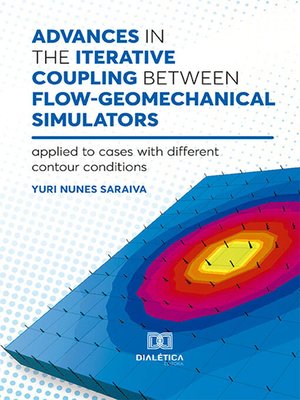Advances in the iterative coupling between flow-geomechanical simulators
ebook ∣ applied to cases with different contour conditions
By Yuri Nunes Saraiva

Sign up to save your library
With an OverDrive account, you can save your favorite libraries for at-a-glance information about availability. Find out more about OverDrive accounts.
Find this title in Libby, the library reading app by OverDrive.



Search for a digital library with this title
Title found at these libraries:
| Loading... |
Numerical analysis for reservoir engineering scenarios is necessary due to the importance of predict the consequences and products of water or oil exploitation, as well as the vast quantity of variables that are associated with hydraulic engineering, oil, and rock geomechanics. Due to this, the present work consists to show the relative activities for geomechanical coupling and flux simulation based on paper SPE – 79709 of Dean et al. (2006). This way, the used software for coupling was IMEX (2019), in the explicit iterative coupling, with geomechanics and flux model of the same simulator and, posteriorly, was used the geomechanics simulator FLAC3D 6.0 associated with the flux model of IMEX and programming with MATLAB and FISH to transfer the data between simulators. In addition, the results demonstrate the satisfactory obtention of convergence of the problems proposed by Dean et al. (2006), in IMEX with geomechanics. For iterative coupling between FLAC3D and IMEX was obtained good behavior convergence of problem 1. At the end of the simulations, a reservoir model is elaborated based on this problem with the inclusion of a horizontal fracture near the region of the producing well. This type of coupling allows an accurate study with the highest level of complexity and inclusion of variables to reservoir behavior, as the inclusion of fractures and constitutive models.






